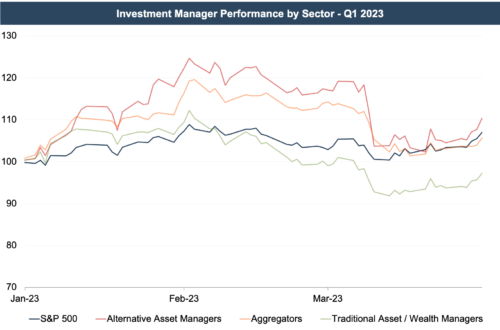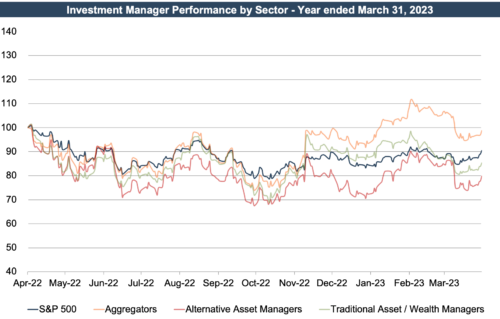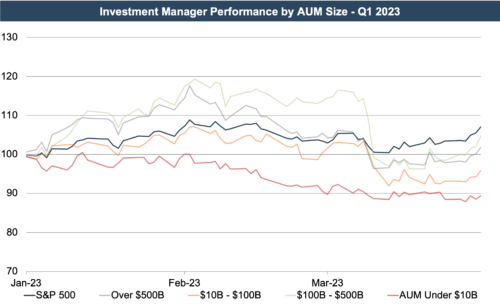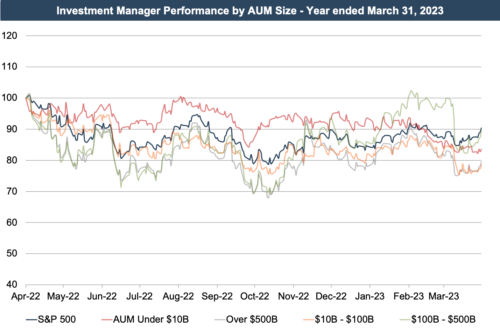Q1 2023: The Market Rallies, RIAs Stay Behind
The RIA industry saw a tumultuous first quarter, with most categories of publicly traded investment managers underperforming the S&P 500. Alternative asset managers, however, saw a last-minute rally during the final few days of the quarter, leading to this category outperforming the S&P during the period.
Performance by Sector
The uptick in the broader market during Q1 translated to an improved profitability outlook for investment managers since their revenue is typically tied to the market value of assets under management. In 2022, most RIA sectors saw a decline in year-over-year earnings, although earnings were still higher than pre-pandemic levels. This decline in 2022 RIA earnings is consistent with the broader market decline in 2022.


Performance by Size Category
RIAs of all asset sizes underperformed the S&P 500 during Q1 2023. Smaller managers (below $100B AUM) saw a moderate decline, while larger asset managers (above $100B AUM) experienced a modest increase in price during the period. Up until the first week of March, asset managers between $100B and $500B AUM had been outperforming the S&P 500. With the events surrounding the failure of Silicon Valley Bank and Signature Bank in early March, this class of asset managers saw the sharpest decline in price, causing the group to ultimately underperform the S&P 500 by the end of the quarter. This group still outperformed other AUM groups, though. The full-year graph below shows that the smallest asset managers (below $10B AUM) outperformed the S&P 500 for most of 2022. This trend did not continue into Q1 2023.


Pricing Trends
The median LTM earnings multiple for publicly traded asset and wealth management firms increased 6.4% during the first quarter of 2023. After trending downwards for most of 2022, multiples began to increase in Q4, and continued to increase in Q1 2023, as LTM earnings metrics began to fully reflect the impact of market conditions in 2022.

Implications for Your RIA
The value of public asset and wealth managers provides some perspective on investor sentiment towards the asset class, but strict comparisons with closely held RIAs should be made with caution. Many smaller publics are focused on active asset management, which has been particularly vulnerable to the headwinds such as fee pressure and asset outflows to passive products. Many sectors of closely held RIAs, particularly wealth managers, as well as larger public asset managers, have been less impacted by these trends and have seen more resilient multiples as a result. In the case of wealth management firms, strong demand from aggregators has also helped to bolster pricing in recent years. Focusing on the fundamentals of your RIA—compensation structures, cost controls, hiring practices, etc.—may offer protection from arbitrary changes in market multiples.
In our January M&A update, we described the increase in volume of transactions and the decrease in transaction prices during Q4 2022. M&A is often viewed as a lagging economic indicator since deals take several months or even quarters to complete. Later this month, we will report on Q1 2023 M&A activity to keep you informed on market trends.
About Mercer Capital
We are a valuation firm that is organized according to industry specialization. Our Investment Management Team provides valuation, transaction, litigation, and consulting services to a client base consisting of asset managers, wealth managers, independent trust companies, broker-dealers, PE firms and alternative managers, and related investment consultancies.
 RIA Valuation Insights
RIA Valuation Insights 






